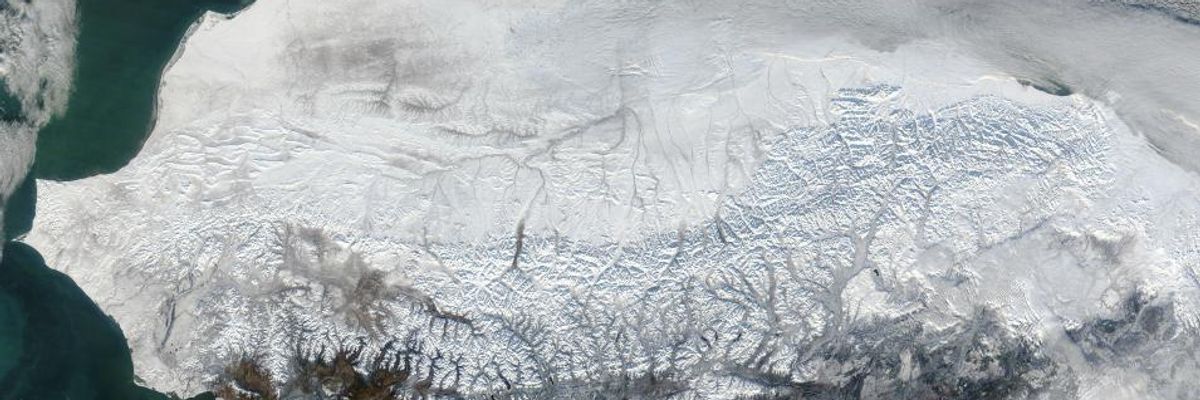As the Arctic enters an "unprecedented" state of warming, a new study shows that emissions of a potent greenhouse gas from thawing permafrost in the planet's northernmost region may be 12 times higher than previously thought.
"This needs to be taken more seriously than it is right now."
--Jordan Wilkerson, lead author
That's according to a study published this month in the journal Atmospheric Chemistry and Physics. The paper's findings add even more weight to scientists' urgent warnings about the mounting threats of permafrost thaw.
Permafrost is a frozen mix of soil, rocks, and sand that covers about a fourth of the Northern Hemisphere--and is primarily found in the uppermost areas, where temperatures are rising more rapidly than the rest of the world.
When permafrost melts because of human-caused global warming, it pours greenhouse gases such as carbon dioxide (CO2) and methane (CH4) into the atmosphere, further heating the planet.
Nitrous oxide (N2O), a greenhouse gas nearly 300 times more potent than CO2, stays in the atmosphere for an average of 114 years, per the U.S. Environmental Protection Agency (EPA).
N2O "has conventionally been assumed to have minimal emissions in permafrost regions," the report said, citing research published in the 1990s.
But the new study's findings challenge that assumption.
A team of researchers, led by Harvard University scientists, used a small plane to measure greenhouse gas levels over 120 square miles of thawing permafrost in the North Slope of Alaska. They found that in just one month of 2013, emissions of nitrous oxide in the region reached what was previously believed to be the yearly total.
"This revelation could mean that the Arctic--and our global climate--are in more danger than we thought," explained a statement from Harvard.
"This is widespread, pretty high emissions," lead author and Harvard graduate student Jordan Wilkerson said of his team's findings.
"We don't know how much more [N2O is] going to increase," he added, "and we didn't know it was significant at all until this study came out."
What is clear, though, is that "much smaller increases in nitrous oxide would entail the same kind of climate change that a large plume of CO2 would cause," Wilkerson said.
The team's findings align with other recent studies that have relied on chambers--or "covered, pie plate-sized containers planted into tundra"--or the extraction of cylindrical "cores" from the permafrost to measure greenhouses gases, according to Harvard's statement.
The new study, said Wilkerson, "makes those findings quite a bit more serious."
The findings also bolster experts' previous warnings that policymakers around the world aren't adequately considering the impacts of permafrost thaw in their plans--based on the goals of the Paris climate agreement--to cut down planet-heating emissions and prevent climate catastrophe.
And, as the Harvard statement pointed out, more planetary warming isn't the only threat posed by rising N2O emissions.
"Nitrous oxide poses a second, special threat," the statement said. "Up in the stratosphere, sunlight and oxygen team up to convert the gas into nitrogen oxides, which eat at the ozone."
Wilkerson called for further research on the greenhouses gases--particularly N2O--released by melting permafrost and delivered a warning.
"This needs to be taken more seriously than it is right now," he said.

